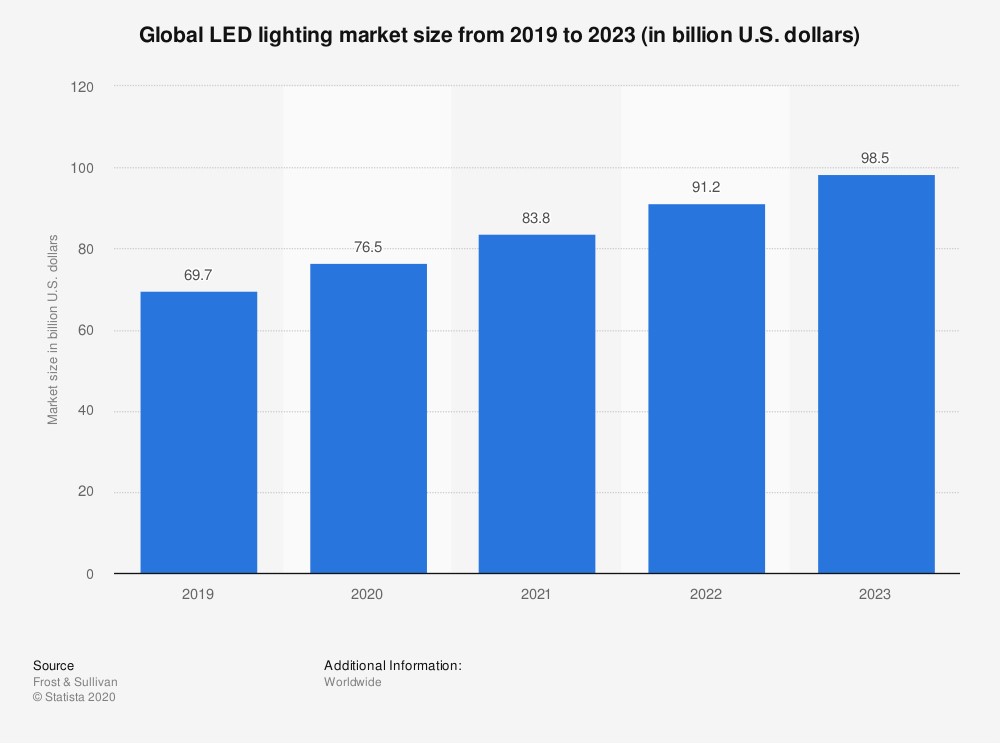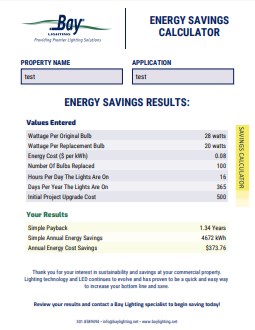Blog
- Home
- Resources
- Bright Ideas Blog
- Recycling LEDs
Recycling LEDs
The movement towards upgrading to LED lighting is quickly accelerating throughout commercial and private properties. More and more people are seeing the benefits of limiting the use of mercury-containing light bulbs. LED fixtures last the

As the above chart shows, the LED market is expected to keep growing steadily through the decade. According to the Department of Energy, they’ve become the go-to choice for a wide variety of uses.
The Need for Recycling LEDs
The rising popularity of LEDs has created a need for safe recycling services. The EPA, as well as state law, prohibits throwing away mercury-containing bulbs in commercial or household garbage. These bulbs only contain small amounts of mercury, but the toxins can enter air and water cycles and pose a risk to human health.
Though they don’t contain mercury and aren’t considered toxic by law, LED bulbs should also be recycled. LEDs are RoHS compliant; however, they do contain small amounts of heavy metals and with many organizations’ desire to be environmentally friendly, LED lamps shouldn’t be overlooked when it comes to recycling. In fact, over 95% of an LED light is made from recyclable material.
Because of their long lifespans, which can reach up to 50,000 hours, LEDs have not yet contributed a large amount to global waste. At this point, there are no major LED recycling companies. However, just like most things, over the next 10 years, LED waste will grow if we don’t start recycling today.
According to Recycle Nation, “While LED light bulbs do not contain mercury, many do contain other hazardous substances such as lead and arsenic…. If you want to recycle LED light bulbs and ensure those dangerous substances do not enter the waste stream, you may have to hunt for a proper recycling facility.”
Recycling services for LED lamps are still limited, but this is a fast-growing market. Finding a reliable LED lightbulb recycling service is a major way commercial organizations can be proactive and contribute to a healthier environment and more sustainable world. Fortunately, Bay Lighting is leading the way with our innovative, easy-to-use recycling program.
LED Recycling Services
While there aren’t a lot of options out there yet for recycling LEDs, don’t worry. Bay Lighting offers a recycling program that accepts LED lamps in MD, DC, and NOVA. Our process consists of the following:
Removing existing lights – When removing your burnt-out CFLs, it’s important to exercise caution. Unplug the lamp or turn off the fuse-box, depending on the fixture. Designate a recycling space at your facility, collect your old lamps in separate containers to avoid breakage, seal your boxes, and schedule a pickup. We do not accept broken lamps.
Installing new lights – We offer an array of lamps and light fixtures that can save you money in the long-term through energy savings. We consider the needs of your individual space and develop a lighting scheme that will work to achieve your goals.
Recycling old lights – We recommend keeping the original box to store your recyclables. However, if you need a box, we sell specialty boxes for each item.
What We Recycle
- LED, fluorescent, neon, CFLs, and high-density discharge (HID) lamps
- Ballasts
- Batteries larger than size D
- Detectors
Contact Us
If your commercial property is located in Maryland, DC, or Virginia, and you’re interested in recycling your LEDs, call Bay Lighting at 301-858-9494, or check out our recycling program guide.




